Lottery Numbers and Banana Skins
It's Q&A time! We've picked a selection of the best science questions from listeners, like: are lottery numbers really random? Is there still a hole in the ozone layer? And crucially - why do some bananas peel into three sections and some into four? Here to answer them is our expert panel: tech journalist Tim Revell, geneticist Hannah Thompson, climate scientist Ella Gilbert, and physicist Jess Wade...
In this episode
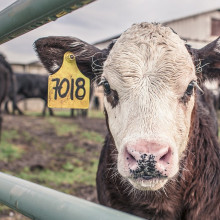
01:01 - Meet the panel: going vegan and cancer AI
Meet the panel: going vegan and cancer AI
Tim Revell, New Scientist; Ella Gilbert, British Antarctic Survey; Jess Wade, Imperial College London; Hannah Thompson, Cambridge Cancer Genomics
With us this week are Tim Revell, tech journalist for New Scientist magazine; climate scientist Ella Gilbert from the British Antarctic Survey; Jess Wade, physicist and award-winning science communicator; and Hannah Thompson, geneticist and Chief Product Officer for Cambridge Cancer Genomics. Chris Smith sat down to ask them about going vegan and AI that can detect cancer...
Chris - Now with us this week, our talented tech head, Tim Revell, he's from New Scientist. Great to have you back, Tim.
Tim - Yeah. Great to be here. Thanks!
Chris - And what have you had on your radar at New Scientists lately?
Tim - Well, we've been testing out the idea that going vegan improves your carbon footprint, reduces the amount of CO2 you are responsible for. And some of us did an experiment in the office where we recorded everything we ate laboriously for a week. And then the following week everyone went vegan and recorded everything they ate two and then a specialist analyzed everything we'd eaten and looked at how our carbon footprint was affected.
Chris - How does that actually work? Why would going vegan translate into a superior carbon footprint for a person who's normally a meat eater?
Tim - So there are certain foods that, when you look at how they are produced, how much food for example goes into making them. So beef for example, you have to feed a cow and then ultimately you kill that cow to eat the meat. Things like milk. You also have to keep a cow alive. All of those correspond to energy that goes into producing that food and some foods are more heavy in terms of the energy you need than others.
Chris - And how big was the difference?
Tim - It was a really large difference. So those people who were meat eaters who went vegan, their carbon footprint was reduced by around 70%. There were also people who are vegetarian already, like myself, who then tried to go vegan for a week to see whether it made much of a difference. And for those people it halved their carbon footprint too. So it does make quite a big difference.
Chris - Do you think it's sustainable? Do you think people will stick with it? Because it is quite hard if you're not used to eating like that to embrace a healthy vegan lifestyle, isn't it?
Tim - Yeah, I myself find it really difficult. I find it really easy to go vegetarian. I find it really hard to go vegan for a week. I found like you have to become an expert, whereas you can sort of be a casual vegetarian. But I think what we found is that by reducing things a little bit, you still make a difference. So you don't have to go to the extreme of becoming a hundred percent vegan to reduce your carbon footprint, if you're interested.
Chris - Thanks Tim. So any tech questions and perhaps even vegan questions, you can put those to Tim. Well, it's fair to say Ella Gilbert, who's also with us from British Antarctic Survey and who's going to talk about climate, you're vegan, is that right?
Ella - That is right, yeah.
Chris - But you were vegan before it was cool to be vegan. You were vegan all along! So why are you vegan?
Ella - For the environmental impact predominantly? I also find that it really helps my health. So I'm a boxer in my spare time and I find it a lot easier to stay in my weight category if I'm vegan. But I mean the main motivation was the environmental impact.
Chris - Of course, the environment's been in the news a lot, hasn't it? I mean not only because we've seen Paris and the implementation of the Paris agreement, but we've also got what's going on, what has been going on for a while now in Australia with these fairly dramatic fires.
Ella - Of course. I mean climate change is all over the news and I don't think it's going away anytime soon. And these sorts of dramatic events like we're seeing in Australia, they're happening more and more frequently. So they're not going away.
Chris - When you are working at British Antarctic Survey, what actually do study?
Ella - Predominantly I'm looking understandably at Antarctica. I do climate modelling a lot of the time, but trying to understand how melting occurs in Antarctica. What specifically is causing that melting. And I've got an atmospheric physics background. So it's, it's usually weather.
Chris - And boxing! So punching above her weight on climate science. That's Ella Gilbert. Also with us is Jess Wade. She is a physicist and someone who's interested in metamaterials. So that's the interface between physics and chemistry. She's Imperial college. She's also with us. Hello Jess. Welcome back. And what have you had your eye on?
Jess - I was super interested in this story that came out a couple of weeks ago about Google and DeepMind and a bunch of universities around the world looking at improving our efficiency of detecting breast cancer in people who've had mammograms, training, huge algorithms and data sets to be able to identify where within those images people were going to suffer from breast cancer.
Jess - So if you do a bunch of mammograms, I think they studied 28,000 ,to try and tell whether people had breast cancer and to be able to do it more efficiently. And they managed to do it, they managed to develop an algorithm that could do it as efficiently as doctors.
Chris - So just to be clear, this is showing a computer the same images that normally a radiologist, an x-ray doctor would look at and training the computer what to look for.
Jess - Exactly that. And something that we do in the UK is we have kind of double readings. So it will go to a first radiologist and then to a second radiologist. And if there's a discrepancy between the two, you'll call that person back in and do some more checking. And what this algorithm and AI tool can do is really increase that efficiency so that you don't have to have more and more of these expert radiologists. You make them have to do less work. And we have a big challenge in recruiting people with those skills. So it'd be really, really great if we had a computer that could do that for us.
Chris - Thanks Jess. Also with us is Hannah Thompson who actually is interested in genetics and genomics, you actually work at Cambridge Cancer Genomics. What's that?
Hannah - Yeah. Hi Chris. It's a startup. We're interested in getting patients the right treatment at the right time. So we actually use a bit of this aforementioned AI and we help to help the doctors make a decision about what treatment that patient should be on.
Chris - And is that based on looking at the genetics of a problem a person has or looking at their genetics and making predictions about problem they might have? How's it work?
Hannah - Yeah, so right now once a patient has been diagnosed with cancer, we take a blood sample and you can actually find DNA that relates to their cancer in their blood, which is really cool. And what we do is we look at those mutations that are there and see what the most applicable treatment is at that time. Now in the future we would really like to do what you just mentioned, predict everything that could happen and say from this single blood sample, we would love to have you on this treatment for four weeks instead of six months and then switch onto this one that's going to work even better.
Chris - How's that sound to you, Jess? Sounds great!
Chris - But I like your algorithm as much.
Jess - Yeah, I really liked the idea of it. And I come from a family of NHS employees, so like anything that can reduce the burden on the NHS.
Chris - Sounds good to me.
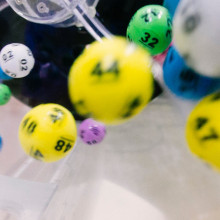
07:45 - Are lottery numbers really random?
Are lottery numbers really random?
This question - picked perfectly at random, of course - comes from user syhprum on our forum. Tim Revell explained the maths, as well as how to pick a good set of numbers...
Tim - It's a good question and one that I enjoyed looking into. So that we're all on the same level. The UK lottery is 59 balls numbered one to 59 and you win the jackpot if you correctly guess six balls that are selected from those 59 and your chances of doing that are about one in 45 million. So if you do it, you are a very lucky person indeed.
Chris - How'd you calculate the one in 45 million?
Tim - The number of balls that could be chosen in the first instance is 59 of them. In the second instance there are 58 of them. In the third instance there are 57 and you do that until you get to six balls, multiply them all together.
Chris - So it's one in 59 times one in 58, 57 and so on six times over, and that's where you get that number?
Tim - Yeah. Cause that means you would pick the correct sequence of numbers that comes up. And so what does that, what does it actually mean for the numbers to be random? So some people think that if it was random you would expect that the numbers would come up roughly the same amount of time. And the way the lottery is currently set up has been since 2015, and so since 2015 the number 58 has come up 59 times. And that's the most common number. But the least common number is the number 33 which has come up 30 times. So that's quite a big difference. That's twice as many times that the most common one has come up than the least common one. So does that mean it's fixed? I guess is the question you will want to know the answer to. And the answer to that is no. So even though it is random, you would expect these variations and as the lottery goes on with that same format, you would expect the gap to close at least as a proportion.
Chris - Yeah. Cause the other thing that people do is they choose numbers that are selection or smattering from across the number one to 59 because there seems to be this innate bias in people that the number one to the sequence one, two, three, four, five, six is much less likely to happen than a random smattering. But actually it's equally likely to happen mathematically isn't it?
Tim - Yeah. So on that exact point, just because all of the sequences are likely, that doesn't mean that some sequences are not worse choices than others.
Chris - Because obviously if you choose the same sequence I do, I've got to share my winnings.
Tim - So it's thought that the sequence one, two, three, four, five, six is chosen by about 10,000 people every week. So even if your jackpot is 4 million, that's 400 quid that you get. It's not very good considering on another week you could get all 4 million. So I did, I looked up some tips on the best numbers you should choose. You should avoid picking numbers under 30 because people tend to pick dates so any dates tend to have numbers under 30 in them. You should also avoid lucky number seven because everyone picks lucky number seven so you don't want that one.
Tim - And people like sequences. So one, two, three, four, five, six but also two four, six, eight. Any sequences like that tend to have more people choosing them. So you should pick something that feels random to you that you can't see an obvious pattern in it and includes lots of numbers over 30.
Chris - Some good tips for you there, Jess. Do you play the lottery?
Jess - I do not play the lottery, but I'm going to start now!
[Ed - Note from Tim Revell added subsequent to publication in response to enquiries from listeners regarding the fact that one has to discount the order of the numbers selected: "My apologies, I think I missed that bit out on the show when trying not to get bogged down in the mathematical weeds. You take into account the order by getting rid of all of the combinations that are the same i.e. 123456 and 132456. You do that by dividing 59 x 58 x 57 x 56 x 55 x 54 by 6 factorial, which gets you 45057474..."]
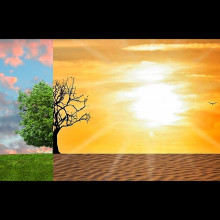
11:06 - How can you tell humans cause climate change?
How can you tell humans cause climate change?
Listener Peter emailed us asking for us to set the record straight over climate change. Climate scientist Ella Gilbert breaks down the differences between natural change and the human contribution...
Ella - It's a tough one. And I suppose we use a lot of different types of evidence and there's a few different ways of doing it. So when you think about natural climate change, I mean the climate has changed over so many different timescales as a result of natural factors. So things like the amount of oxygen in the planet's atmosphere or the tilt of the Earth's orbit or the way that the earth moves around the sun, all these things can affect the climate on the, on the earth surface over, you know, hundreds of thousands or millions or billions of years.
Ella - So you have to think about which kind of timescale you're thinking about, if you think about much more contemporary climate change, which I suspect the question is probably more interested in, then things like solar cycles or volcanic eruptions. Those things have either very defined injection points - like a volcanic eruption for instance - or you can extract a kind of a cycle. So with solar activity activity, for instance.
Chris - I don't want to put words into Peter's mouth, but I think where he's coming from is from the perspective that if we wind the clock back, say 30 million years or so, the world was so warm, there was not a trace of ice anywhere. The polar ice caps are completely gone. And so there were no humans around then to have caused climate change. So we know that the temperature does have these radical departures. We know the planet does warm and cool, and it does it naturally. So what is different this time and, and why do we think this time is any worse than all the previous times?
Ella - Yeah, you're completely right. There's periods in our history where there's been no ice. There's periods when the entire planet has been covered in ice for, you know, 12 million years. So it really varies between these huge extremes. But what distinguishes modern climate change from all of that kind of climate change is that the rate at which it's happening is completely unprecedented. If we look at evidence such as ice cores, which we take in Antarctica predominantly, you can see that the amount that the atmosphere and the temperature has increased in the last, you know, a century or two centuries, is completely unprecedented in up to, you know, a million years or so.
Chris - So do you think that this is grounds to really worry or do you think that in the same way that the planet has always bounced back, there is still life on Earth, that we're resourceful enough, there won't be a major problem. We'll just carry on business as usual. It'll be fine?
Ella - I think that really depends on whether you're a glass half full or glass half empty kind of person. For me, I think about it in the sense that it's a terrifying prospect, but we must use that fear in a positive way because that should motivate us to actually implement action. And I mean, what's the worst that could happen? We create a world that's sustainable and environmentally friendly for nothing. Oh no. It'd be much better. It'd be much nicer. Genuinely, there's a whole bunch of extra benefits that go along with tackling climate change.
Chris - As one person put it to me. You shouldn't regard a positive future in terms of environment as necessarily one which is a kind of rough future, which where we have enormous sacrifice. Actually, there'll be enormous benefits to come with such as a cleaner environment, better air to breathe and so on. So, indeed.
Ella - Yeah. No one is suggesting a return to medieval times!
Chris - No, not at the moment anyway.
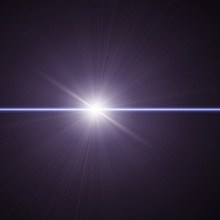
16:53 - Can two bits of light bounce off each other?
Can two bits of light bounce off each other?
Neil asked this question on our forum, so physicist Jess Wade explained...
Jess - Yeah. This is a really cool question. I think when you just ask it, you think, yeah, of course light can do that. It reflects it, it refracts, it does all of those things. But then if we think about light in terms of its kind of quantum state, we think about these little packets of photons, which I guess Neil might've heard of, people listening to this, might've heard of these photons. They carry force and they like to interact with things that have a charge. So photons can collide with each other, pass through with each other. They won't interact with one another because they don't have a charge. The only way you can make a photon interact with another photon is by it spontaneously degenerating into different kinds of quantum particles. And this can happen. It's super, super rare, unsurprisingly, which is why we don't talk about it all the time, but a photon can exist and spontaneously become an electron and an antielectron. And then one of those antielectrons can interact with an electron from another photon and combine to give out light. And in that way, two photons can interact, but it's super rare.
Chris - Well If I shine two light waves towards each other, then they can meet and if you've got two waves and they line up, you'll get a bright spot. And if you have them going where one's going up at that moment and one's going down, they cancel each other out. So why are they adding together then under those circumstances to make that bright spot?
Jess - This is kind of the weird and beautiful thing and you have to do a course in quantum physics to get the full interest of it and extremes. But when we think of the wave theory of light and the way that the peak of one wave can meet the trough of another wave or two peaks can interact. Yeah, we can think about amplitudes coupling and increasing like that. But when we think about the particle nature of light, the photon, the quantum nature of light, it's really, really hard to imagine a situation where two photons could interact and add up in the way that we see it in the wave theory.
Chris - So in other words, when we see the light as a bit brighter, where two light waves have coincided, is that just because I'm seeing the effect of one and I'm seeing the effect of the other, they don't necessarily need to know each other exists. They're not knowingly adding each other together. And that's why they can then carry on on their merry way afterwards. Having not, in other words, changed each other at all.
Jess - Exactly that, they don't know that the other one is there.
Chris - So if I did have a very bright laser and I find it at you, and you had an equivalently bright laser with all the light waves lining up exactly, could I bounce my light laser off of yours? Would I even know that the two had bounced off each other?
Jess - I think it'd be incredibly hard to prove that it's happened. We have shown in some cases that it's happened, so it's happened in a few different experiments all around the world. Really, really hard to get it right. Really hard to align everything as anyone with an optics lab will tell you, but also really, really hard to measure it, to know that you've done it. But yes, if we did it, I'm sure it would happen a few times. We just haven't come up with sophisticated enough technology to be able to interpret that yet.

19:49 - Correction: mathematical 12 days of Christmas
Correction: mathematical 12 days of Christmas
Chris Smith has a correction to a story in our Christmas 2019 show...
Chris - Now, I have to actually issue an apology. Just before Christmas, mathematician Amalia Thomas was on the programme, and she was looking at the song “a partridge in a pear tree” (The 12 Days of Christmas). And in that song, everyday you get a new present, plus of course you get all the presents you’ve had on the previous days, again. And so she challenged everyone to work out how many gifts she’d expect to get in total, by the time the twelfth day had been and gone. Now she solved it by giving you a formula that would calculate the number of gifts everyday. Have you heard this one Tim?
Tim - I have yes, but if you press me to tell you the answer I’m not going to remember!
Chris - Well, unfortunately alongside Amalia’s Christmas pudding, she’s had to eat a helping of humble pie, because she got so overwhelmed with excitement at how many gifts she was going to get for Christmas from her true love, that unfortunately although her formula was quite right, actually she added up the total wrong. And it should have been 364 presents, not the 288 that she stated. She forgot to add on the last day.
So thank you very much to keen eared listeners Jo and Robert, and Evan and Ian who got in touch to let us know. We have very careful listeners here on The Naked Scientists!
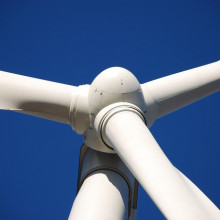
21:03 - How do you make wind turbines more efficient?
How do you make wind turbines more efficient?
Tech journalist Tim Revell tackled this question...
Tim - The simple answer is: yes. So wind turbines have become a lot more efficient, and the best thing you can do to make a wind turbine more efficient is make it bigger. And that comes in two flavours. One of them is making the blades bigger, the bits that rotate - normally there are three of them - and the larger they are, the wider an area they cover, and so the more wind that they can catch and then rotate. And that means the turbine can produce more power in total. The second thing you can do is make the whole wind turbine taller. It tends to be windier higher up, and the wind tends to be more consistent higher up. So the taller your wind turbine, that tends to mean that it can reach its potential energy more often. Which is a big deal with wind because it can be a bit intermittent.
Chris - People were talking about also using vertical blades? So rather than these things that look like a big fan that you'd blow air around a room with, actually having vertically oriented veins, as it were?
Tim - Yeah.
Chris - Is that better?
Tim - It depends. It's not really been proven yet which design is the best. There are these ones that are vertical and spin round, but they seem to have gone out of favour. The ones that tend to be more popular are the ones that are three blades that rotate a bit like a fan. But I think they are really incredible now. So the world's largest wind turbine is called the Haliade-X, and it is just extraordinarily large. So its blades are 107 metres long; that is longer than a football pitch, it's one and a half times the length of a jumbo jet, each one of its blades. In total the thing is about five times the height of Nelson's column, two and a half times the statue of Liberty, or if you built it in London it would be London's third largest building. That's just one wind turbine. And to give you a flavour of how much power that would produce, that's about 16,000 European homes that it could produce power for continuously.
Chris - And the noise pollution?
Tim - Well these are for in the sea. So you would have these in the middle of the ocean and then... yes, so if you were nearby you might hear it, but it's not going to bother you in your home.
Chris - One constraint that was raised to me, which I must admit... and perhaps you could speak about this as well, Ella, from an environmental point of view - everyone said these are fantastic things. They don't have a very big ground footprint. You can remove them and you don't ever know they were there, not like a nuclear power station where it's going to be there for hundreds of years. Problem is, those blades are all made of fibreglass. And therefore there's an enormous recycling cost built into that, because you've got something that's made of carbon-based product. You've got to ship the thing on and off of the turbine. You've got to then recycle it into something, but there is no facility to recycle these things like there's no facility to recycle fibreglass boats, so they're all going in landfill. Which kind of defeats the object, doesn't it?
Ella - I mean, yeah. In a lot of construction, or lots of renewable electricity generation methods, there is this problem. Because often you're non-renewable materials to produce something that will produce energy. But I guess if you consider the entire life cycle of a product, the amount of electricity or energy it produces is important to consider in the context of the materials that go into it.
Chris - Hannah?
Hannah - I didn't think ever about recycling a wind turbine. How long do they last for?
Chris - Well the boats are a good guide, because boats are about 50 years and then the glass tends to begin to de-laminate, where the layers begin to separate because you get water permeating in there. And also the sunlight falling on the polymer begins to degrade it. And it's the same with the blades. There is one factory I'm aware of in Germany that turn it into concrete. So they ship the blades to the factory, grind them up, and because the stuff just burns in the furnace, it actually contributes as a fuel to the furnace. And the glass is just silica, so that actually is what concrete or cement contains anyway, so it's just an additive in the cement. So it's quite a nice way of doing it. But you've got this enormous carbon footprint of shifting the thing that you've had up there generating a carbon neutral energy source, now contributing a lot of carbon in taking it to and from the wind turbine and then trying to recycle it, or even burying it. So that's an issue.
Jess - Can we think about more how we can fix these things and patch them up rather than completely getting rid of them and, you know, they go out of fashion and then we make a new wind turbine with a different design, potentially vertical; is there not a way that we try and resuscitate them?
Tim - I think that's something that will happen in the future. But at the moment we're seeing wind turbines going from almost nothing, windmills like the old style, to being these huge mega-structures. And at the moment the focus has been: how can we actually make them power homes in a consistent way. The next job will be: how can we make them a bit more environmentally friendly, in terms of the actual materials that are used. But even the materials that are used have changed a lot in the last 10 years. A large component as well as the fibreglass is also balsa wood. Balsa wood is one of the best things you can put in in a wind turbine.
Chris - And bamboo, they're using.
Tim - And bamboo, yeah, because wood is naturally flexible, so it's got that movement in it so that it doesn't just snap off when the wind blows. And then you've got... you know, you can't just glue a blade back onto half of a wind turbine. But in the future we may find ways to make them last, you know, after 50 years we give them a coat of something and then they lost another 50 years.
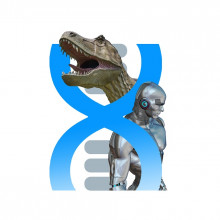
26:16 - What would happen if you injected dinosaur DNA?
What would happen if you injected dinosaur DNA?
Johnny sent this question via the webform. Geneticist Hannah Thompson tried to reign in his mad scientist tendencies by answering...
Hannah - Mm. Probably not. So we kind of talked a little bit about plasmids earlier; so that's one way you can get dinosaur DNA into a cell. It would have to be with CRISPR and Cas-9 to help it chop up your human genome and insert it in. But actually it's really unlikely that that would be inserted into a place where it would function, or do anything useful. And it's usually... the body's really, really good at preventing that kind of stuff from happening. So it'd probably just be degraded actually. Like, for example, we're covered in bacteria and we're not turning into bacteria.
Chris - That's a very good point. But I think one thing maybe we could raise here is that the genetic code is universal, isn't it? So the genetic code that runs in, say, a jellyfish, also works in a human. So if I took a jellyfish gene and put that into a human, a human cell would understand that genetic message and make the jellyfish gene. People have made glowing green mice, for example, doing that, haven't they? So is it not theoretically possible that given jellyfish predate dinosaurs in evolutionary terms, dinosaur genes - if we could get them - you could insert them into a human cell, it would understand them, but whether it would make anything useful, that's a different question.
Hannah - As such, you could sort of read the book, but you might not be able to interpret it.
Chris - So you're not going to become a T-Rex tomorrow. Which is kind of reassuring. Although I do know a few dinosaurs academically already; most of us who work in academia do.
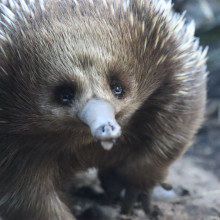
29:16 - Quiz: animals, inventions and brainteasers!
Quiz: animals, inventions and brainteasers!
Timothy Revell, New Scientist; Ella Gilbert, British Antarctic Survey; Hannah Thompson, Cambridge Cancer Genomics; Jess Wade, Imperial College London
It's quiz time! Chris Smith got the panel ready for some devious questions...
Chris - This is the competition that leads to a prize beyond price: it is the Naked Scientists Big Brain of the Month award. Have you won this before, Tim? Have you been on...
Tim - Two out of two!
Chris - Have you? What a track record! That's like on the Apprentice when they say I've been in the winning team X number of times, you've got a reputation to defend. You're in good hands here Ella. You've got Tim with a strong track record. Alright. Now the way this works is they've got two teams. Ella and Tim are Team 1, and Jess and Hannah, you're going to be Team 2. There are three rounds, and it's whoever's got the highest score by the end of it. Okay, so let's start Round 1. Round 1 is called 'New Year's Evolutions'. Did you see what I did there? Echidnas and bees, Tim and Ella, are the only known land animals that have evolved what special sense? And to give you a clue, lots of fish have it and so do sharks. What do you think?
Ella - That weird electrical one that sharks can do? I don't know.
Tim - Yeah. Sense electric fields?
Ella - Yeah, I'm going to go with that.
Tim - Yeah. Shall we try that?
Chris - On fire! Yes, absolutely, electricity. Lots of fish do have electroreception but it's very rare on land, because probably how poorly air conducts electricity. But some echidnas, like their semi-aquatic cousins the platypuses - because they're both monotremes, they're related - have electric receptors in their bills. And also bumblebees and honeybees also seem to be able to detect electric fields around flowers, which is very handy for them. So there you go. Well done. Plus one to Team 1. Question 2. So this is over to Jess and Hannah. The process called carcinisation, which has happened many times independently in the different groups of animals on earth, has been described as "one of the many attempts of nature to evolve" what?
Jess - Does it have anything to do with carbon?
Chris - I suppose in some respects it does, yeah.
Hannah - Bones... carbon....
Chris - It's a creature. It's an animal. We want an animal.
Jess - What it's an... carcinisation is some animal that's been trying to form?
Chris - An attempt to... Yes. In a nutshell, yes. That's what you want. So what's the animal?
Jess - Okay.
Hannah - What's your favourite animal?
Chris - I really have no idea what this is trying to even get at. I'm so sorry.
Chris - It's actually a crab. The phrase comes from the 20th Century zoologist LA Borrodaile, and trying to evolve crabs has happened at least 10 times independently in different groups of crustaceans. Creatures that have a hard exoskeleton like a crab.
Jess - Okay, well I'll keep that fact.
Chris - Sorry, no points on that one. You've got plenty to play for, don't worry. Here we go. Onto Round 2. This is called 'First to Market'. So back to Tim and Ella. Which of these inventions came first: the smoke detector, the metal detector, or the particle detector?
Tim - Oh, I have no idea. Do you?
Ella - Oh, no. It depends on what you consider each of these things. Are they in their current form?
Tim - Well I don't know!
Ella - I mean, I bet there's a really old smoke detector...
Tim - Yeah.
Ella - Fire's been around a while.
Chris - It's called a nose!
Tim - Smoke detectors are sort of particle detectors...
Ella - Ooh, careful.
Tim - What was the other one?
Chris - Smoke detector, metal detector, or particle detector.
Tim - I think we should go particle detector. I think that's the one they don't want us to pick.
Ella - Okay. I'm willing to go with you, with your 100% track record.
Chris - No! Surprising this one, it's the metal detector. The appropriately-named Frenchman Gustave Trouvé - get it - invented a handheld metal detector in 1874, and that was to find bullets in people's bodies. CTR Wilson invented a cloud chamber, which was the particle detector, in 1911. The first smoke detector, apart from your nose, which it was right for you to point that out, didn't come until the 1930s when Swiss physicist Walter Jaeger tried to invent a sensor for poison gas. He failed, but his instruments did manage to detect his cigarette smoke. So he could tell if you were smoking or not. But then you'd kind of know that, wouldn't you? So sorry Tim and Ella, on this case, zero. So Jess and Hannah, here's your chance. Which of these inventions came first? Was it the sewing machine, the vending machine, or the machine gun?
Jess - Oh gosh, okay. Sewing machine, again, what is it? The current iteration of the product or are we thinking way back?
Hannah - Not the middle one, not... ooh. Maybe there's a really old vending machine.
Jess - I don't know if there would have been a need for a really old vending machine. I don't know if people in Victorian times were like, "I'm going to go and get a Kit Kat." And maybe because sewing was largely women's work it wasn't something that they'd... you know, we learn about looms and things like that, that was probably the first generation of that.
Chris - So are you going for that then?
Jess - No, no. Hold your horses.
Chris - I'm going to have to hurry you.
Jess - Should we go for machine gun?
Hannah - Okay!
Chris - You want to go machine gun? Ah, no. The answer will surprise you. The vending machine was the oldest of the inventions. The first machine gun was the Gatling gun, that was 1861, and the Maxim gun was 1884. The Englishman Thomas Saint. Invented the sewing machine. The very first vending machine though dates back to the first century AD! The inventor was Hero in Alexandria, and in his book Mechanics and Optics he has a device with a slot at the top, and if you drop in a coin, it dispenses holy water. There's a thing. When the coin deposits, it falls on a pan. That's attached to a lever. The lever opens a valve, some water flows out, and the pan continues to tilt with the weight of the coin 'til it falls off, and at that point the counterweight snaps the lever back up and it shuts off the valve. So it dispenses a vended portion of holy water.
Jess - I'm so sorry, Hannah.
Chris - Right, Round 3. And it's... you could equalise. So you're still in the game you two. So keep your chin up. Here we go. Round 3: Brainteasers. Now this is quite hard, you're going to have to listen carefully for this one, okay. You're in a locked dungeon, Tim and Ella. By the door are three boxes, a red one, a white one, and a black one. On the black box it says "the key is in this box". On the white box it says "the key is not in this box". On the red box it says "the key is not in the black box". A sign says "of these three statements, at most one is true". You're only allowed to open one box. So which one are you going to open to find the key? Right, I'll park you two looking at that one while I give the other two theirs, okay. So Hannah and Jess. Now let's say that those are right and they get out of the dungeon and they reach... or you get out of the dungeon and you come to another door, and surprise, surprise, there's another three boxes. And on the black box, this one says "the key is not in the white box". On the white box it says "the key is not in this box". And on the red box it says "the key is in this box". A sign says "of these three statements, at least one is true and at least one is false". You're only allowed to open one box. Which one's got the key in it?
Ella - Solid reasoning.
Chris - Okay, you ready to go, you two?
Tim - We've got an answer.
Chris - Okay, right. So while Jess and Hannah are still thinking, so your question: on the black box it says the key's in this box, the white box says the key's not in this box, the red box says the key is not in the black box. The sign says "of these three statements, at most one is true". So what box do you want to open?
Tim - I mean before saying this, I must say in previous times, my partner has saved me every time and that's why my record is good. We think the answer is that the key is in the white box.
Chris - Yes, you're absolutely right. You have scored a correct answer. So what that means is that Hannah and Jess, you can't catch up I'm afraid. But did you have an answer anyway for us?
Jess - I'm going to let Hannah go for it.
Chris - Because unfortunately they have pipped you to the post, but we'd love to hear the answer anyway. So I told you that on the black box it says the key's not in the white box, on the white box it says the key is not in this box, and on the red box it says the key is in this box. Of the three statements, at least one's true and at least one is false. So what do you think? Just to salvage your reputation.
Jess - Oh, I think that's gone already.
Chris - Any thoughts? What are you going for?
Hannah - I actually threw away my brainteaser book over Christmas.
Ella - Decluttering for 2020!
Chris - Alright then. Well look, we have to give you a big round of applause, Tim and Ella; you're this week's Naked Scientists Big Brains of the Week. Well done. A score of two out of three, that's very good. And you got that very hard brainteaser right which was very impressive.

37:45 - Is there still a hole in the ozone layer?
Is there still a hole in the ozone layer?
Atmospheric physicist Ella Gilbert is here to explain...
Ella - It is still there, but it is shrinking. It's one of the few good stories in environmental science and I think in September 2019, it was the lowest, well the smallest on record since the ozone hole was discovered. So that's good.
Chris - What caused it?
Ella - So it's a process that involves light and involves the emission of chlorine and bromine that breaks down or degrades ozone, which is the thing that protects us from horrible UV rays coming from the Sun and stops us all getting very sunburnt. But this chlorine and bromine comes from the emission of ozone depleting substances. Things like CFCs are the most commonly spoken about. They used to be included in refrigerants and coolants. So you'd spray them in your aerosol cans, and you'd find them in fridges.
Chris - Asthma inhalers had them, didn't they?
Ella - Yeah, all over the place. They were totally ubiquitous. And it was actually one scientist at the British Antarctic survey, along with a few others who discovered this ozone hole in the first place, which is quite a funny story actually.
Chris - Jonathan Shanklin I think was one of them. wasn't he, who found it?
Ella - Yes, exactly. Yes. I really like the story because they had a huge amount of data on ozone and the Americans, I think it was who had all of this information coming from their satellites were using an algorithm to detect whether this data was useful, and it was throwing out all of this information because it considered, "Oh no, that's far too low. Those values can't be true. So we'll just get rid of that data."
Chris - Oh, So they discovered the ozone hole, but they chucked it away because they didn't think it could be there.
Ella - Yeah.
Chris - So how did they realise their mistake?
Ella - I think, well I don't actually know the details, but I'm fairly certain that the people who discovered it actually went through the data and went hang on, this could actually be real, and there could be a physical mechanism behind it. And then one thing led to another and they actually underlined the real cause.
Chris - So having found that there is this ozone hole, they then got the mechanism, which is that these refrigerants and things are getting into the atmosphere, concentrating over Antarctica where they deplete ozone. So we understood the mechanism that then led to the Montreal protocol in the late eighties didn't it? Where we banned the use of the worst culprit chemicals. And you're saying that now because we're not using these things anymore, the ozone is recovering.
Ella - Yes.
Chris - But it's still pretty big. That hole though, isn't it? I mean it was Australia sized even as recently as a few years ago.
Ella - Yeah. I mean it varies in size with the season because the destruction of ozone requires light. So in Antarctica you get periods of complete darkness. So when the sun returns in spring, then you start getting this photolytic, or like, controlled destruction of ozone starting again. And that's when the ozone hole starts getting bigger.
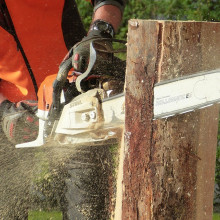
40:57 - What material is best at absorbing sound?
What material is best at absorbing sound?
There's been some debate on the Naked Scientists forum over how best to sound-proof the noise of a chainsaw. Physicist Jess Wade explained which materials aborb sound the best...
Jess - There's a few different ways you can do it and it depends how much money you want to spend, really. You can obviously get materials that are better at absorbing sound, kind of soft materials, fabrics, cloth that you wrap around things, when you go into soundproof places. You can get materials that are really good at damping sounds, so they're materials that don't vibrate. When you go into a recording studio, you see those kinds of funny structures on the walls and they're really, really good at just making sure things don't vibrate and you don't hear anything. Or you can do incredibly elaborate things where you kind of build a floating room within a room and you isolate it so that sound can't get through, and can't come in and vibrate the little hairs in your ears and tell you your ears and your brain that you're hearing something awful. I think probably the most effective way to do it for a chainsaw, which is obviously intermittent,, and you don't want to invest tens of thousands of pounds into soundproofing, is to just wear earplugs or to try and get noise canceling headphones, because they do a pretty good job and I don't think you'll be using the chainsaw 24 hours a day and justify the cost of soundproofing something elaborately.
Chris - That's true. Although you know, we went to the Hello Tomorrow summit in Paris last year, and I met a guy there who has made noise canceling windows for houses, and it's the real deal. And what he does is, he has a system that can detect the vibrations of sound waves hitting the window, and he can detect and process this so fast that the sound waves don't even make it through the window. What they've done is to work out what the sound waves look like and then put back into the window, the mirror image of that sound to cancel out the sound before it's made it to the pane on the inside. And as a result you don't hear anything. And he reckons they can knock the sound coming into the house down by maybe 60-70 decibels. You can't hear the traffic in the street outside, for example. It's costly and it's quite expensive to run in terms of electricity. It's not got a zero kind of electricity footprint cause you've got to obviously put the active sound into the windows, but cool. Yeah? I thought that was really interesting.
Jess - You could, kind of find some polymer that can be used to generate electricity from sunlight and a transparent one that you could have on the window to generate the electricity to power that. So there's ways to get around it being power hungry.
Chris - Yeah, I mean the only downside is that sound finds its way into houses through routes other than just the windows as well, doesn't it? So you've to sort of, air proof your house.
Jess - Yeah, you've got to block your chimney, your plugs and everything like that.
Chris - It does become a law of vanishing and diminishing returns. I fear.
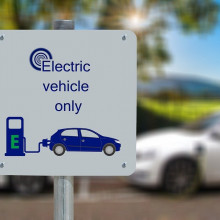
43:54 - What's the future for electric car charging spots?
What's the future for electric car charging spots?
Listener John got in touch to ask us this question. He wonders about street lamps - and if so, whether the cables already there will have sufficient capacity. We put it to Tim Revell...
Tim - I like this question a lot, but it does require me to sort of predict the future a little bit, which is not necessarily my forte. So at the moment, the UK has around about 150,000 electric vehicles and about 20,000 public charging points. But the vast majority of electric car charging happens at home and that's partly because it's slow. So if you want to charge, for example, a Nissan Leaf, which can do about 150 miles on a full charge, to charge it from nothing to completely full takes depending on your charger between 6 and 11 hours. So that is, you park at home and you plug it in and you leave it overnight. But what we are increasingly seeing is a type of charging called rapid charging, which happens almost five times the speed of the sort of charger you could get at home. So a private parking spot might not be necessary with one of these, because they could charge not just a Nissan Leaf, but a much bigger battery in less than an hour. So for example, if you're out on a long drive, it's no longer a case of just being a commuting car. You pull over at the side of the road, you have a cigarette break and a cup of tea and half an hour later your car could have another 200 miles in it. And that makes it a big difference from what we're currently experiencing a lot of now.
Chris - I was talking to Lee Cronin, who's Professor of chemistry at Glasgow, and he told me a couple of years ago that he has come up with a liquid which has got a very high energy density, and it's based on the chemical tungsten, and he can drain this chemical into say a cell, and you get the electricity out of it, depleting the liquid of its electricity. So it changes what's called the oxidation state of the tungsten, surrendering enormous amounts of electricity in the process. To recharge the cell, you drain out the depleted fluid, and put fresh one in and so he's saying that actually this might be the future of electric vehicles, where it uses exactly the same infrastructure we use at the moment for petrol stations and things. You go in and put a fluid into your car, which has got the energy in it. Difference is here, you just have to have a system that puts fresh fluid in and takes old fluid out, but basically it uses all the same way we're used to working and that might be quite attractive.
Tim - Yeah, there are lots of different ideas, I mean we had a story at New Scientist a few weeks ago about a battery that in principle, you could charge it up in 10 minutes. We had another one that could fit in your smartphone and would last five days, but the thing with all of these ideas is they're not really off the ground yet. What you need in a battery is for it to be able to work just as well at minus 20 degrees, as it does plus 30 or 40 or 50 degrees. And getting from a lab measurement where Lee Cronin's got this good idea that works in his lab to actually having something that works robustly again and again, again, in many different situations when someone's added four extra speakers to their car and done all of the things that you shouldn't do is a really, really big challenge.
Chris - So you want eight speakers, not four then, is that what you're saying?
Tim - Yeah. At least these four extra speakers from what you have now.
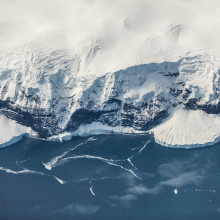
47:01 - What would Antarctica look like if it all melted?
What would Antarctica look like if it all melted?
Ella Gilbert works for British Antarctic Survey, so Chris Smith put this question to her...
Ella - I'd say it would pretty much look like a lump of rock, probably. I think the real question we should be asking is what would the rest of the world look like? Antarctica is covered in, on average 2.7 kilometres of ice, so it's pretty thick, in some places it's up to four kilometres thick. And if all of the ice was to melt, it would raise global sea levels by 58 metres. So I think that's probably the framing that you should be going for. What would the map look like if all of Antarctica melted and ended up in the sea.
Chris - Because there's one other consideration, which is that that 2.7 average depth of ice kilometre, average depth of ice covering Antarctica is gravitationally very active. So it's pulling a lot of sea water around Antarctica, which would otherwise be redistributed around the Earth. So as well as the pure physical effect of when you melt that ice and it goes into the sea and tops up the oceans and pushes up the levels, you lose that gravitational attraction. So the bulge of water that's currently sitting around Antarctica is also gone.
Ella - Yeah. And it affects different parts of the world differently of course as well.
Chris - Yeah. So returning to the question, just to do it justice, you'd basically see a hunk of rock because there's a hunk of rock. There's a volcano there as well though, isn't there? Mount Erebus is there, so you'd probably see a mound of rock with a volcano is the bottom line, isn't it?
Ella - Some bits are below sea level. So in the West Antarctic, some are below sea level and you'd get a few, few little lakes. But mostly it's just a bunch of rock.
Chris - Ella. Thank you. I mean it used to be a green and pleasant land, didn't it? Once upon a time it was connected to Australia and Tasmania and there were big penguins and forests, and it was warm and balmy because the ocean couldn't circulate and make it cold? But that was a little while ago. Thank you for that. Ella.
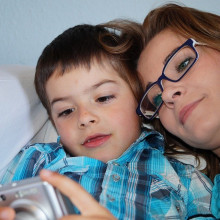
49:02 - Can facial recognition detect children's parents?
Can facial recognition detect children's parents?
Listener Paul got in touch via the webform to ask this question, which Tim Revell answered...
Tim - Well, the answer is yes and no. So face recognition systems, the way that they work the most common types use a technology called convolutional neural networks. And these are a type of algorithm that split up an image into lots and lots of different component parts. And then it analyses those different components. So for example, one part of the neural network might focus on your eye, it might then look at the shape, it might look at the color and that could easily then be compared to another person. So with that technology we have at the moment, we could easily make a comparison between two images of say you and one of your parents. But I think what's interesting about this is what the algorithm will pick up, it could be completely different to the similarities that a human might pick up. So I have a printed off at home prop here that I'm going to show Ella. Ella, who is in these two pictures?
Ella - Reese Witherspoon?
Tim - Reese Witherspoon. Correct. And could you describe the difference between the one on the left and the one on the right.
Ella - One appears to have some glasses on and the other does not.
Chris - Okay. So yes, you've got two pictures side by side and one of them has got, it's clearly pasted on graphic art. You've stuck on a pair of fairly cheap looking glasses frames, not designer. She would definitely not wear anything like that.
Tim - Yeah, exactly. But you can see that this is the same image and then there's some fairly dodgy glosses that have been photo-shopped on over the top. But if you ask a neural network what these two images are, the one on the left, it says Reese Witherspoon, the one on the one on the right. It says it's Russell Crowe.
Chris - How? Where's the beard?
Tim - Well, exactly. So to a human eye there is no way you would ever say this is Russell Crowe.
Chris - Really the best devices say that's Russell Crowe?
Tim - The best devices say this is Russell Crowe, and it's because of these glasses. The way these glasses have been chosen, the little sort of pixel pattern on there, you can see it looks a little bit like a dodgy tortoise shell glass, but the way an algorithm analyses an image. It looks at these individual pixels and it picks up on things that are not like how humans see things at all. What that means is that though you could get face recognition to show similarities between a person and their relatives, it may pick up on things that just don't seem to resemble the similarities that we as humans see in other people.
Chris - If we know that it's being fooled in that way, can't we just write better programs?
Tim - Thing is, it's very difficult to do that. This is called an adversarial attack where you tweak the image so that it confuses a neural network, and you can improve systems against these types of attacks, but it's really, really difficult. And every time someone tweaks their algorithms so that it's good at defending against one sort of attack, someone comes up with a slightly different one. And actually this is quite worrying because if you're a driverless car for example, and someone puts one of these sorts of stickers on a road sign, suddenly you might think a stop sign is actually a go sign, and that could be a big, big issue going forwards.
Chris - So how do they plan to surmount this?
Tim - They don't really have a good answer for this yet. Part of it is that their hope that you get many different opportunities to look at a stop sign or a go sign when you're driving along. So it's not just one image like you get here of Reese Witherspoon. Another way that you might do it is you have an extra part of the system. So, for example, stop signs could have something embedded in them that the car can bounce off and it gets some electronic signal that says, Oh, this is a red light at the moment. But it is something that is currently still up for grabs. You know, they need to work out how to solve it.
Chris - I'm really quite shocked Tim, it's not often I'm shocked by something like that. I didn't realise it was so vulnerable.
Tim - Yeah. Well it's one of those things that you know, that the technology is moving so fast. It's only a few years ago that even recognising Reese Witherspoon was too difficult for an algorithm. So it's come a long, long way. But, for it to be truly safe on the roads, it's going to have to go a little bit further still.
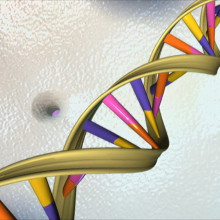
52:59 - Do DNA mutations put us in danger?
Do DNA mutations put us in danger?
CRobin23 asks this question on the forum. Geneticist Hannah Thompson has an answer...
Hannah - Yeah, that's a great question. That's exactly how certain diseases happen, just like cancer. So if we take a step back and we look at our genome, we have 2.9 billion base pairs in it, which is about 725 megabytes of data, which is actually the same as a typical film.
Chris - They're the genetic letters, those base pairs.
Hannah - Yes, that's right. So about one out of every hundred thousand times you sort of, try and copy those base pairs. You get a mistake, and that's actually completely normal in itself and the cell is really, really good at figuring out what's happened.
Chris - And that would happen, for instance, when cells are dividing, they've got to copy the genetic information to put a copy into the new cells they're making, and that's when those errors might creep up.
Hannah - Yep, that's right. Luckily for us, only 1% ish of our genome is sort of really interesting, and well what we know of so far is really useful for us to be alive. And so the mutations in that part of the gene region obviously are still common, but the cells are really, really good at detecting them and stopping them from happening. And obviously you can personally do things that stop them from happening a bit more. So less UV, less smoking, less red meat, that kind of stuff. And different kinds of cells have different kinds of mutation rates. So there's a really cool study by Peter Campbell on eyelids. So in middle aged and elderly people, they have about 60 to 180 mutations in each cell on your eyelid, which is pretty mind blowing.
Chris - Is that because it's been exposed to the sun a lot.
Hannah - Yeah, exactly that. But that doesn't necessarily mean that you will get cancer. Some of those mutations might not be in the really important genes.
Chris - Is it not important also, to point out that actually, this is how evolution happens and the way in which we adapt to the environment we live in is because we do hand on genetic spelling errors to our offspring, and the consequence of that is that sometimes it might be bad for them, but sometimes it might be good.
Hannah - Yeah, it's important to have all really useful ones, that's for sure. Yeah, but we know that the mutation rate of the sperm cell for example, is one 10th less than that of any other cell in the body, so it happens quite rarely in those cells that would pass on those mutations to their offspring.
Chris - Ah, so the body's defending against that happening as best it can. But eyelids are regarded as less of a priority.
Hannah - That's true.
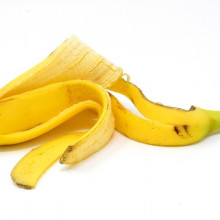
56:13 - Why do banana peels have different numbers of segments?
Why do banana peels have different numbers of segments?
We got this question via the webform from listener Rick. Chris Smith asked Hannah Thompson to look for the answer...
Chris - Now can you help us out though Hannah with the banana question cause I've got my banana here, I have peeled it and actually I got three peel bits when I peeled it. Sometimes it is possible to get more I suppose. I mean is this just the luck of the draw? However you peel your banana, sometimes you pull more or less bits of skin, is it down to the size of the banana? Any science to back this up?
Hannah - I did scour the internet for it and I found out some facts, but maybe not the exact answer.
Chris - That you didn't find the answer to why sometimes you peel it with one bit of peel, sometimes two, sometimes three.
Hannah - It might just be that it's been bashed one side too many times in it and it falls into four bits.
Chris - The other thing is when I was in Zimbabwe, I was watching the monkeys eating bananas and I realised I've been eating them, oh you're nodding Ella, that I was eating the bananas all wrong.
Ella - Yeah, use the wrong end is the best way because then you don't squish the banaba.
Chris - How do you actually get in there though because I always go for the long bit, the tailie bit and then rip it off.
Hannah - I've got a twisting technique. I was lucky enough to visit an Amazon tribe and they told me to do that.
Chris - And you what? So you pinch and twist so you go to the wrong ends of the banana, pinch and twist and then try that. And how many peels do you get then.
Hannah - Between three and five?
Chris - It's down to what mood you're in then it sounds. There's nothing special about the bananas. Thank you very much, Hannah.
Related Content
- Previous Can bacteria eat plastic?
- Next Large planet orbiting a white dwarf










Comments
So what was the answer to the
So what was the answer to the second brain teaser please?
Well spotted! We didn't
Well spotted! We didn't answer it did we. Sorry about that.
Here's the answer: It's the black box.
If the black box were lying, the key would be in the white box, making both white and red liars as well. So the black box must be telling the truth, making white truthful and red a liar. By process of elimination, the key is therefore in the black box.
Thanks!
Thanks!
Add a comment